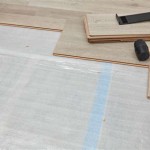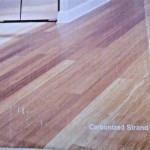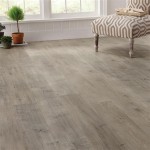What Kind of Underlay for Vinyl Plank Flooring
Vinyl plank flooring has become a popular choice for homeowners due to its durability, water resistance, and aesthetic appeal. While the flooring itself plays a significant role in the overall performance and look of a room, the underlayment beneath is equally crucial. Choosing the right underlayment can enhance the benefits of vinyl plank flooring, improve comfort, and extend its lifespan. This article will explore the different types of underlayment suitable for vinyl plank flooring, factors to consider when selecting one, and the impact of using the appropriate underlayment on various aspects of the flooring installation.
Understanding the Role of Underlayment
Underlayment is a layer of material installed between the subfloor and the finished flooring. It serves several essential functions. Firstly, it provides a smooth and even surface for the vinyl plank to rest on, minimizing imperfections from the subfloor. This is particularly important if the subfloor has minor unevenness or cracks. Secondly, underlayment acts as a sound barrier, reducing noise transmission between floors. This is especially beneficial in multi-story homes or apartments. Thirdly, it can enhance the comfort of the flooring by providing a softer feel underfoot and improving thermal insulation. Finally, some underlayments offer moisture protection, preventing moisture from the subfloor from damaging the vinyl plank.
The necessity of underlayment depends on the type of vinyl plank flooring being installed. Some vinyl planks come with a pre-attached underlayment, often referred to as an attached pad or backing. In these cases, additional underlayment may not be necessary, unless specific needs, such as enhanced soundproofing or moisture protection, exist. However, for vinyl planks without a pre-attached underlayment, choosing the right type becomes crucial for optimal performance.
Types of Underlayment for Vinyl Plank Flooring
Several types of underlayment are available, each with its own characteristics, advantages, and disadvantages. The selection process should involve careful consideration of the specific flooring type, subfloor condition, and desired performance characteristics.
Foam Underlayment: Foam underlayment is a common and affordable option. It is available in various thicknesses and densities. Foam underlayment provides good cushioning, making the floor more comfortable to walk on. It also offers some sound insulation, although not as effective as specialized soundproofing underlayments. Foam underlayment is lightweight and easy to install. Different types of foam are used, including polyethylene (PE) foam and ethylene-vinyl acetate (EVA) foam. EVA foam is generally denser and provides better performance than PE foam. However, foam underlayment is typically not the best choice for moisture protection, and some types may compress over time under heavy furniture or foot traffic.
Cork Underlayment: Cork is a natural and sustainable material that offers excellent sound insulation and thermal insulation. It is also resistant to mold and mildew, making it a good choice for areas prone to moisture. Cork underlayment provides a firm and supportive base for vinyl plank flooring and is durable. It is available in different thicknesses, and the thicker the cork, the better the sound and thermal insulation. Cork is generally more expensive than foam underlayment but offers superior performance in several key areas. It is suitable for various subfloor types, including concrete and wood.
Rubber Underlayment: Rubber underlayment is known for its exceptional sound absorption properties. It is often used in apartments, condominiums, and other multi-family dwellings where noise reduction is a primary concern. Rubber underlayment is also durable and provides good cushioning. It is available in different thicknesses and densities, with recycled rubber being a popular and environmentally friendly option. Rubber underlayment can be more expensive than foam or cork, but its superior soundproofing capabilities make it a worthwhile investment for certain applications. It is also resistant to moisture and can provide a good barrier against mold and mildew.
Combination Underlayment: Combination underlayments are designed to offer multiple benefits in a single product. These underlayments often combine different materials, such as foam and rubber, or foam and moisture barriers, to provide a comprehensive solution. For example, an underlayment consisting of a foam core laminated with a moisture barrier film can offer cushioning, sound insulation, and moisture protection. Combination underlayments can simplify the installation process and reduce the need for multiple layers of material. It is important to ensure that the combination underlayment is compatible with the vinyl plank flooring manufacturer's recommendations.
Specialized Underlayment: Certain underlayments are designed for specific applications. For example, some underlayments are specifically designed for use over radiant heating systems. These underlayments are formulated to allow heat to transfer efficiently while still providing sound insulation and cushioning. Other specialized underlayments are designed for use over uneven subfloors. These underlayments typically have a higher density and greater thickness to compensate for imperfections in the subfloor. The selection of specialized underlayment should be based on the specific requirements of the installation and the recommendations of the flooring manufacturer.
Key Factors to Consider When Choosing Underlayment
Selecting the appropriate underlayment for vinyl plank flooring requires careful consideration of several factors. These factors include the subfloor condition, the type of vinyl plank, the desired level of sound insulation, moisture protection requirements, and budget constraints.
Subfloor Condition: The condition of the subfloor is a critical factor in determining the type of underlayment needed. If the subfloor is uneven, cracked, or damaged, a thicker and denser underlayment may be necessary to provide a smooth and stable base for the vinyl plank. In some cases, the subfloor may need to be repaired or leveled before installing the underlayment. If the subfloor is concrete, it is important to test for moisture levels before installing the underlayment. High moisture levels can lead to mold and mildew growth, which can damage the flooring and create health problems. A moisture barrier underlayment may be necessary in these situations.
Type of Vinyl Plank: The type of vinyl plank flooring being installed also influences the choice of underlayment. As previously mentioned, some vinyl planks come with a pre-attached underlayment. If the vinyl plank has a pre-attached underlayment, additional underlayment may not be necessary unless specific needs, such as enhanced soundproofing or moisture protection, exist. For vinyl planks without a pre-attached underlayment, the manufacturer's recommendations should be followed regarding the type and thickness of underlayment to use. Using an incompatible underlayment can void the warranty of the flooring.
Sound Insulation: Sound insulation is an important consideration for many homeowners, particularly those living in multi-story homes or apartments. Different types of underlayment offer varying levels of sound insulation. Rubber and cork underlayments are generally the most effective at reducing noise transmission. Foam underlayment provides some sound insulation, but it is not as effective as rubber or cork. The level of sound insulation needed will depend on the specific requirements of the installation and the local building codes.
Moisture Protection: Moisture protection is a critical factor, especially in areas prone to moisture, such as basements and bathrooms. Some underlayments are designed to provide a barrier against moisture, preventing it from damaging the vinyl plank. Underlayments with a built-in moisture barrier are recommended for installations over concrete subfloors or in areas where moisture is a concern. It is important to ensure that the moisture barrier is properly installed to prevent moisture from seeping through the seams.
Budget: The cost of underlayment can vary significantly depending on the type and quality. Foam underlayment is generally the most affordable option, while rubber and cork underlayments are typically more expensive. The budget should be considered when selecting underlayment, but it is important to balance cost with performance. Choosing a cheaper underlayment that does not provide adequate sound insulation or moisture protection may result in problems down the road, which can ultimately be more costly to fix.
Impact of Underlayment on Flooring Performance
The choice of underlayment can significantly impact the performance and longevity of vinyl plank flooring. Using the appropriate underlayment can enhance comfort, reduce noise, protect against moisture, and extend the lifespan of the flooring. Conversely, using the wrong underlayment can lead to problems such as uneven flooring, increased noise transmission, moisture damage, and premature wear.
Comfort and Feel: Underlayment provides cushioning and makes the floor more comfortable to walk on. It absorbs some of the impact of foot traffic, reducing strain on the feet and joints. Thicker underlayments generally provide more cushioning than thinner underlayments. The type of material also affects the comfort level. Foam and rubber underlayments tend to provide more cushioning than cork underlayment.
Sound Reduction: Underlayment acts as a sound barrier, reducing noise transmission between floors. This is particularly important in multi-story homes or apartments where noise can be a significant problem. Rubber and cork underlayments are the most effective at reducing noise transmission. Foam underlayment provides some sound insulation, but it is not as effective as rubber or cork. The thickness and density of the underlayment also affect its sound-reducing capabilities.
Moisture Protection: Underlayment can protect the vinyl plank flooring from moisture damage. Moisture can seep up from the subfloor and cause the vinyl plank to warp, crack, or peel. Underlayments with a built-in moisture barrier can prevent moisture from damaging the flooring. This is particularly important in areas prone to moisture, such as basements and bathrooms.
Longevity and Durability: Underlayment can extend the lifespan of the vinyl plank flooring by providing a stable and even base. It prevents the vinyl plank from flexing and bending, which can lead to premature wear and tear. Underlayment also protects the vinyl plank from damage caused by unevenness in the subfloor. Using the appropriate underlayment can help to ensure that the vinyl plank flooring lasts for many years.

Choosing Underlayment For Vinyl Plank Flooring Your Ultimate Guide Jona Panel S Inc

Vinyl Underlayment The Home Depot

Flooring Underlayment Guide

Do I Need Underlayment For Vinyl Plank Flooring

Do You Need Underlay For Vinyl Flooring Igloo Surfaces

Underlayment For Vinyl Flooring The Only Guide You Need Floor City

Do I Need Underlayment For Vinyl Plank Flooring

Quietwalk 100 Sq Ft 3 X 33 Mm Underlayment With Sound And Moisture Barrier For Laminate Engineered Floors Qw100b1lt The Home Depot

Find The Right Underlayment For Your Luxury Vinyl Flooring

Flooring Underlayment Guide
Related Posts








